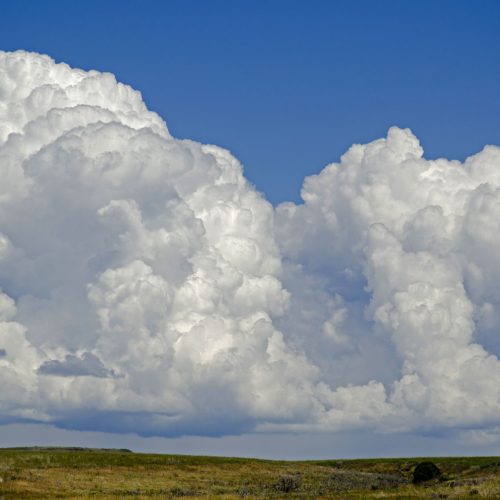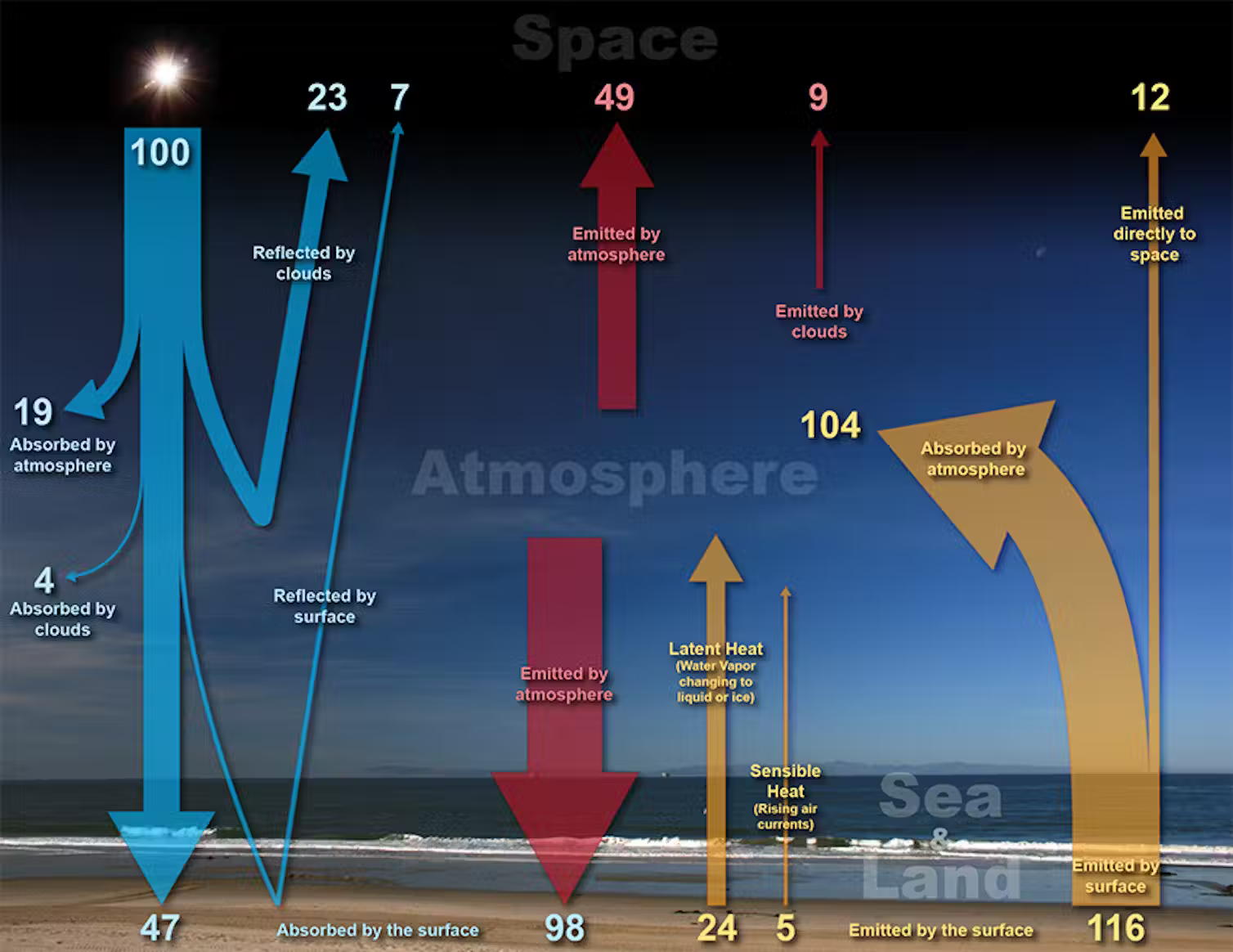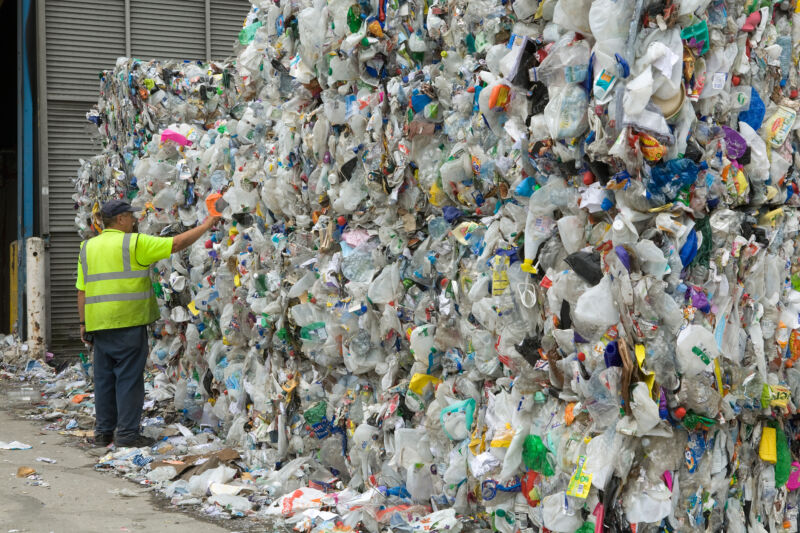Airborne microplastics aid in cloud formation
Clouds form when water vapor—an invisible gas in the atmosphere—sticks to tiny floating particles, such as dust, and turns into liquid water droplets or ice crystals. In a newly published study, we show that microplastic particles can have the same effects, producing ice crystals at temperatures 5° to 10° Celsius (9° to 18° Fahrenheit) warmer than droplets without microplastics.
This suggests that microplastics in the air may affect weather and climate by producing clouds in conditions where they would not form otherwise.
We are atmospheric chemists who study how different types of particles form ice when they come into contact with liquid water. This process, which occurs constantly in the atmosphere, is called nucleation.
Clouds in the atmosphere can be made up of liquid water droplets, ice particles, or a mixture of the two. In clouds in the mid- to upper atmosphere where temperatures are between 32° and minus 36° F (0° to minus 38° C), ice crystals normally form around mineral dust particles from dry soils or biological particles, such as pollen or bacteria.
Microplastics are less than 5 millimeters wide—about the size of a pencil eraser. Some are microscopic. Scientists have found them in Antarctic deep seas, the summit of Mount Everest, and fresh Antarctic snow. Because these fragments are so small, they can be easily transported in the air.
Why it matters
Ice in clouds has important effects on weather and climate because most precipitation typically starts as ice particles.
Many cloud tops in nontropical zones around the world extend high enough into the atmosphere that cold air causes some of their moisture to freeze. Then, once ice forms, it draws water vapor from the liquid droplets around it, and the crystals grow heavy enough to fall. If ice doesn’t develop, clouds tend to evaporate rather than causing rain or snowfall.
While children learn in grade school that water freezes at 32° F (0° C), that’s not always true. Without something to nucleate onto, such as dust particles, water can be supercooled to temperatures as low as minus 36° F (minus 38° C) before it freezes.
For freezing to occur at warmer temperatures, some kind of material that won’t dissolve in water needs to be present in the droplet. This particle provides a surface where the first ice crystal can form. If microplastics are present, they could cause ice crystals to form, potentially increasing rain or snowfall.
Clouds also affect weather and climate in several ways. They reflect incoming sunlight away from Earth’s surface, which has a cooling effect, and absorb some radiation that is emitted from Earth’s surface, which has a warming effect.
The amount of sunlight reflected depends on how much liquid water vs. ice a cloud contains. If microplastics increase the presence of ice particles in clouds compared with liquid water droplets, this shifting ratio could change clouds’ effect on Earth’s energy balance.
How we did our work
To see whether microplastic fragments could serve as nuclei for water droplets, we used four of the most prevalent types of plastics in the atmosphere: low-density polyethylene, polypropylene, polyvinyl chloride, and polyethylene terephthalate. Each was tested both in a pristine state and after exposure to ultraviolet light, ozone, and acids. All of these are present in the atmosphere and could affect the composition of the microplastics.
We suspended the microplastics in small water droplets and slowly cooled the droplets to observe when they froze. We also analyzed the plastic fragments’ surfaces to determine their molecular structure, since ice nucleation could depend on the microplastics’ surface chemistry.
For most of the plastics we studied, 50 percent of the droplets were frozen by the time they cooled to minus 8° F (minus 22° C). These results parallel those from another recent study by Canadian scientists, who also found that some types of microplastics nucleate ice at warmer temperatures than droplets without microplastics.
Exposure to ultraviolet radiation, ozone, and acids tended to decrease ice nucleation activity on the particles. This suggests that ice nucleation is sensitive to small chemical changes on the surface of microplastic particles. However, these plastics still nucleated ice, so they could still affect the amount of ice in clouds.
What still isn’t known
To understand how microplastics affect weather and climate, we need to know their concentrations at the altitudes where clouds form. We also need to understand the concentration of microplastics compared with other particles that could nucleate ice, such as mineral dust and biological particles, to see whether microplastics are present at comparable levels. These measurements would allow us to model the impact of microplastics on cloud formation.
Plastic fragments come in many sizes and compositions. In future research, we plan to work with plastics that contain additives, such as plasticizers and colorants, as well as with smaller plastic particles.
This article is republished from The Conversation under a Creative Commons license. Read the original article.


© Patty's Photos / Flickr (CC-BY 2.0)

